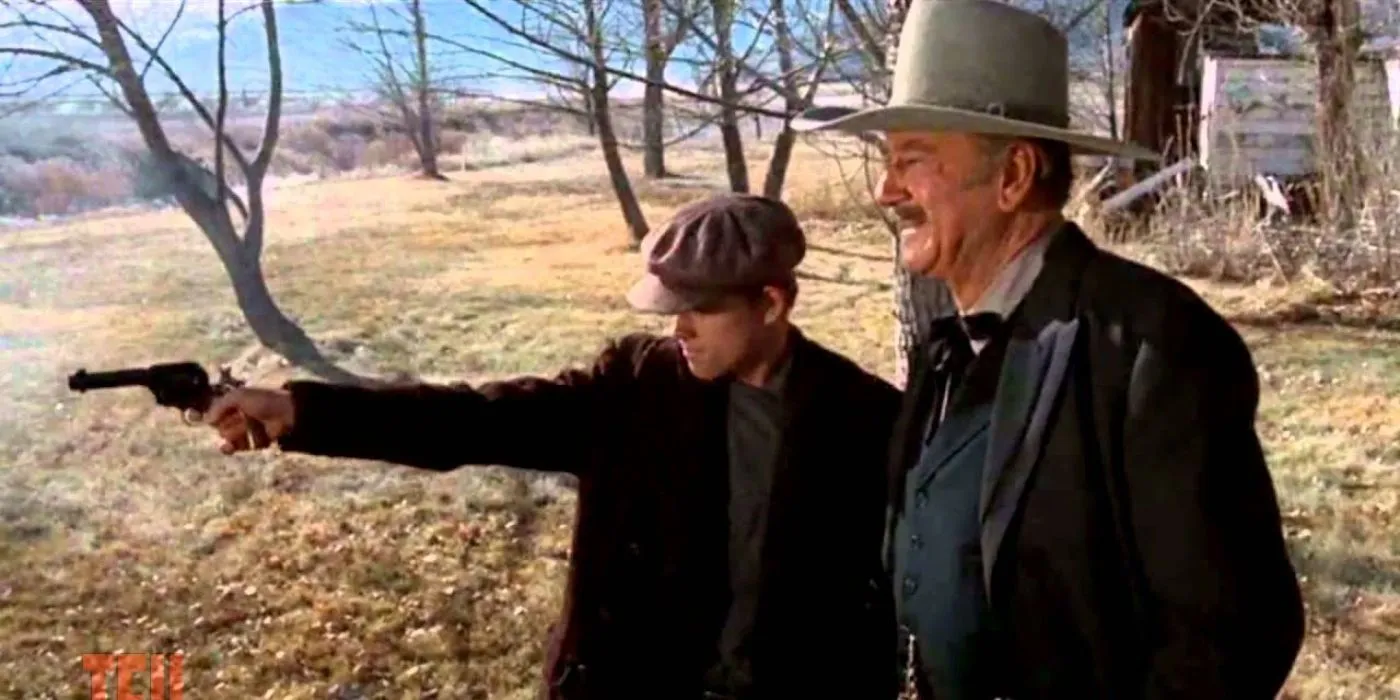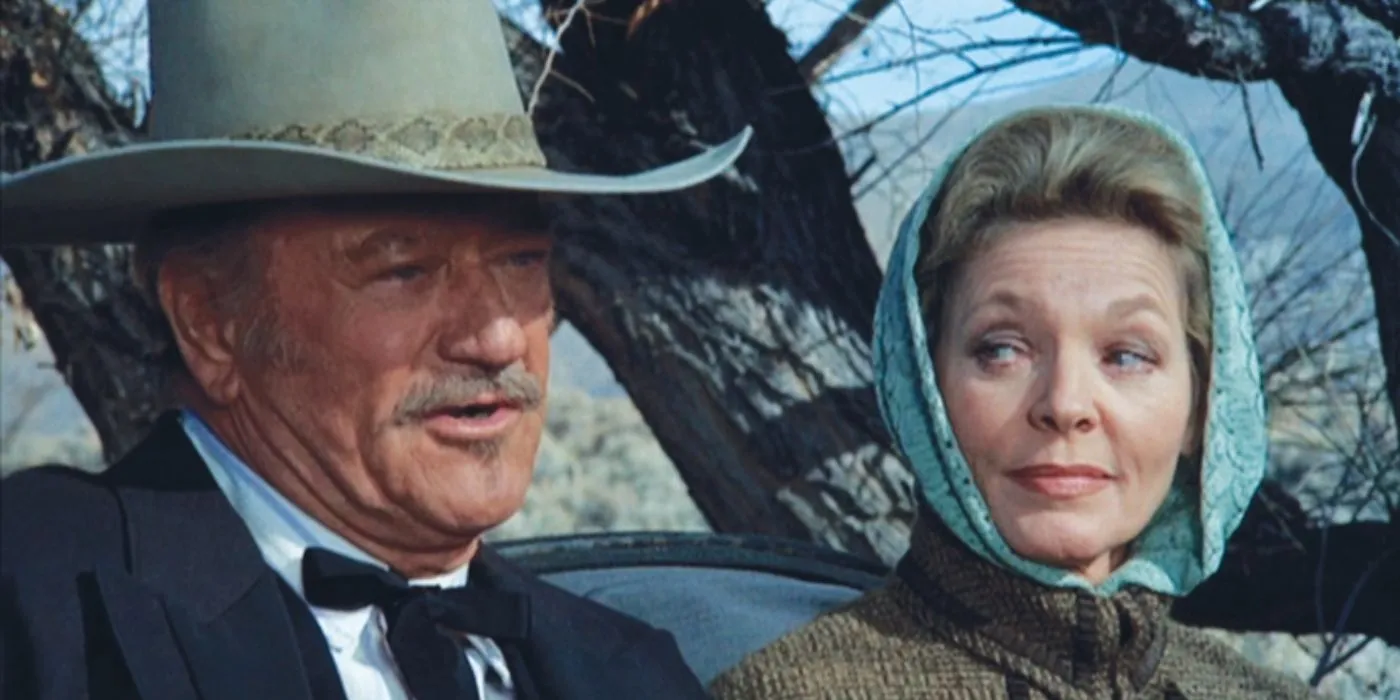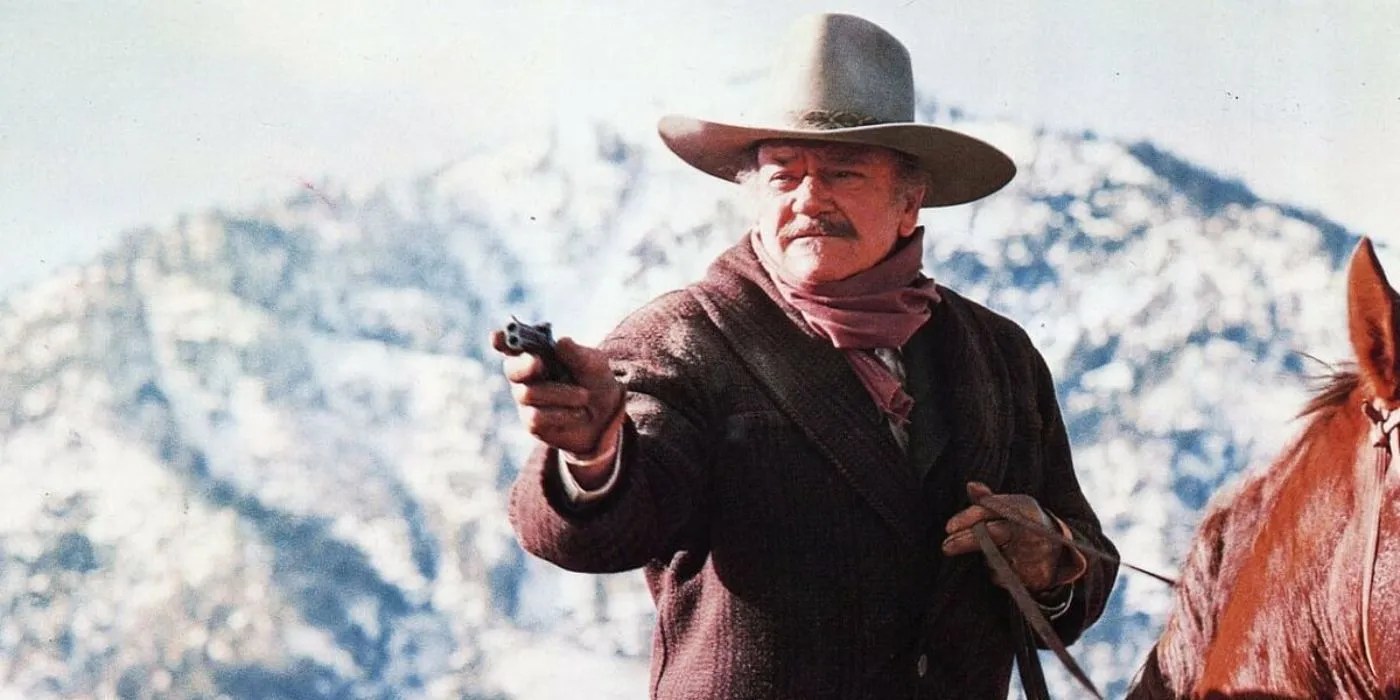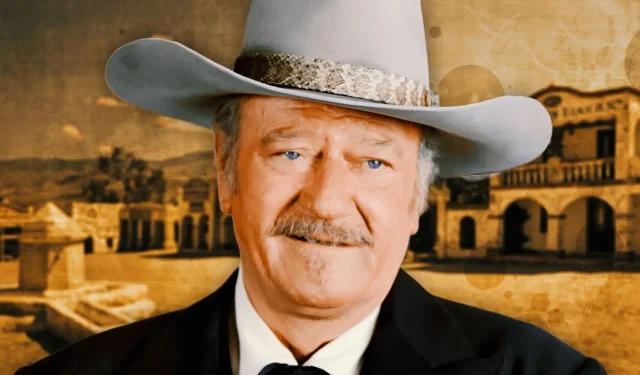In 1976, at the age of 69, John Wayne bid farewell to Hollywood and the Western genre with his performance inThe Shootist. This poignant film tells the story of an aging gunfighter grappling with terminal cancer in early 20th century Nevada. Wayne’s portrayal in this movie marked his final screen appearance, as he succumbed to stomach cancer just three years later, culminating a remarkable fifty-year career that included a staggering 80 Western films. Today, The Shootist is celebrated not only as his last Western but also as one of his finest works.
What elevates The Shootist beyond mere entertainment is its emotional depth, reflecting a character who symbolizes the Western genre confronting his own mortality. By the time the film debuted, the Western landscape had significantly evolved, moving away from the traditional good vs. evil narrative to feature morally ambiguous antiheroes, such as Clint Eastwood’s iconic character in The Man With No Name. Within this context, Wayne’s role as J.B. Books transcends that of an old gunslinger; he represents a legendary figure coming to terms with the shifting paradigms of a genre he fundamentally shaped.
The Journey of John Wayne’s Character in The Shootist
J.B. Books: A Hero’s Departure on His Own Terms
In The Shootist, Wayne embodies John Bernard “J.B.”Books, a notorious lawman turned gunslinger with a past of over 30 confirmed kills. Arriving in Carson City, Nevada, in 1901, Books seeks a second opinion from “Doc”Hostetler, portrayed by James Stewart, after receiving the grim diagnosis of terminal cancer. Recognizing he has only a few weeks left to live, he assumes a pseudonym to rent a room from widow Bond Rogers, played by Lauren Bacall, and takes on a mentor role to her son, Gillom, who would later become acclaimed director Ron Howard.
However, Books’ journey is fraught with challenges, as both old enemies and new threats arise. Determined to meet his fate head-on, Books organizes a standoff with three adversaries at the local saloon, The Metropole, scheduling it for his birthday, January 29th, at 11:00 a.m. Following a final drink at the bar, J.B. confronts his foes, successfully dispatching them, but not before being mortally wounded by the bartender’s surprise attack. Ultimately, he dies on the bar floor with Gillom by his side, encapsulating the tragic yet defiant final act of a legendary figure.
The Shootist: A Fitting Farewell for John Wayne and His Western Legacy
John Wayne: The Embodiment of the Western Genre



One noteworthy aspect frequently overlooked is the film’s opening sequence, which consists of a montage featuring clips from Wayne’s illustrious career, including segments from Red River, Rio Bravo, and El Dorado. Narrated by Gillom, this collection artfully weaves together Books’s backstory with Wayne’s legacy as the quintessential Hollywood gunslinger. Thus, the montage serves as a heartfelt homage to both the actor and the iconic character types he portrayed throughout his legendary career.
The Shootist stands as a testament to Wayne’s lasting influence in a genre that was, at the time, undergoing significant transformation. Rather than attempting to mimic contemporary trends, the film embraces Wayne’s mythos, establishing a narrative that honors his archetype while guiding him on one final odyssey before his metaphorical sunset.


